- Conditions
- Procedures
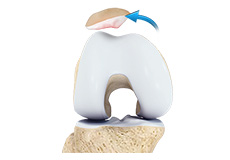
Patellar Dislocation
Patellar dislocation occurs when the patella moves out of the patellofemoral groove, (trochlea) onto the bony head of the femur. If the kneecap partially comes out of the groove, it is called subluxation; if the kneecap completely comes out, it is called dislocation (luxation).

Patellar Instability
Any damage to the supporting ligaments may cause the patella to slip out of the groove either partially (subluxation) or completely (dislocation). This misalignment can damage the underlying soft structures such as muscles and ligaments that hold the kneecap in place. Once damaged, these soft structures are unable to keep the patella (kneecap) in position. Repeated subluxation or dislocation makes the knee unstable. This condition is called knee instability. Patellar (kneecap) instability results from one or more complete or partial dislocations (subluxations).

Knee Fracture
A fracture is a condition in which there is a break in the continuity of the bone. In younger individuals, these fractures are caused by high energy injuries, as from a motor vehicle accident. In older people, the most common cause is a weak and fragile bone.
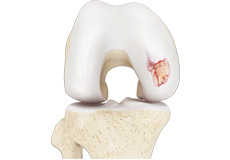
Knee Arthritis
The joint surface is covered by a smooth articular surface that allows pain-free movement in the joint. Arthritis is a general term covering numerous conditions where the joint surface or cartilage wears out. This surface can wear out for several reasons; often the definite cause is not known. Arthritis often affects the knee joint.
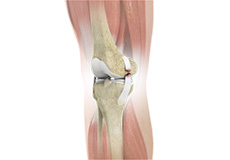
Ligament Injuries
The knee is a complex joint which consists of bone, cartilage, ligaments and tendons that make joint movements easy and at the same time more susceptible to various kinds of injuries. Ligaments injuries may occur during sports, fracture, dislocation or accidents. The different types of ligament injuries include ACL tear, MCL tear and PCL tear. Common symptoms of ligament injuries include pain, swelling and stiffness in the knee joint.

Medial Patellar Instability
Medial patellofemoral ligament (MPFL). Instability causes the patella to displace out of the groove medially. It is associated with popping sound, pain, swelling, and difficulty climbing stairs. Medial patellar instability is often related to previous patellofemoral surgery, but can also occur due to trauma or sports injury.

Lateral Patellar Instability
Lateral patellar instability is the lateral displacement and dislocation of the patella. Structures that support the lateral side of the knee joint such as lateral collateral ligament are usually damaged. Knee joint capsule may also be injured causing pain, swelling, numbness, and stiffness. Lateral patellar instability is related to trauma, sports, or overuse injuries.
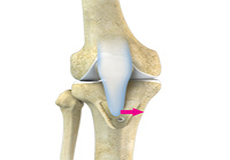
Tibial Tubercle Osteotomy
Tibial tubercle osteotomy is a surgical procedure that is performed along with other procedures to treat patellar instability, patellofemoral pain, and osteoarthritis. The tibial tubercle transfer technique involves realignment of the tibial tubercle (a bump in the front of the shinbone) such that the kneecap (patella) traverses in the center of the femoral groove.
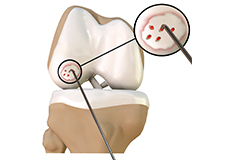
Chondroplasty
Chondroplasty is a surgical procedure to repair and reshape damaged cartilage in a joint. The procedure involves smoothing degenerative cartilage and trimming any unstable flaps of cartilage.
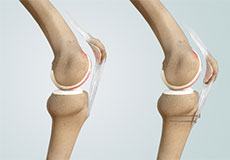
Distal Realignment Procedures
Distal realignment procedures, also known as tibial tubercle transfer (TTT) procedures, are performed to reposition the kneecap after subluxation or dislocation by realigning the tendon under the kneecap to the underlying tibial tubercle.
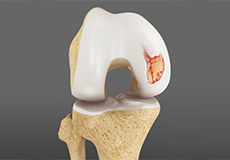
Cartilage Replacement
Cartilage replacement is a surgical procedure performed to replace the worn-out cartilage with new cartilage.
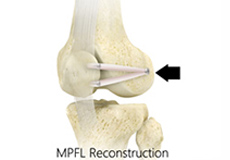
Soft Tissue Stabilization (MPFL Reconstruction)
Medial patellofemoral ligament reconstruction is a surgical procedure indicated for severe patellar instability.The medial patellofemoral ligament is a band of tissue that extends from the femoral medial epicondyle to the superior aspect of the patella. It is a major ligament that stabilizes the patella and helps in preventing patellar subluxation (partial dislocation) or dislocation.

Trochleoplasty
Before performing trochleoplasty, your doctor will ensure that the articular cartilage (spongy tissue that lines and cushions joints during movement) at the trochlea is normal and healthy. The surgery is avoided if there is any sign of arthritis.
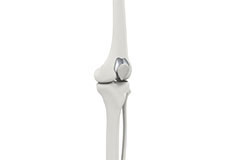
Patellofemoral Knee Replacement
Traditionally, arthritis in only one compartment of the knee is treated by partial knee replacement surgery. Patellofemoral knee replacement is a minimally invasive surgical option performed in the patellofemoral compartment only, preserving the knee parts not damaged by arthritis as well as the stabilizing anterior and posterior cruciate ligaments (ACL and PCL).

Lateral Patellofemoral Ligament (LPFL) Reconstruction
LPFL reconstruction or lateral patellofemoral ligament reconstruction is a surgical procedure employed to treat patients with severe patellofemoral instability. The procedure involves replacing a torn lateral patellofemoral ligament with a part of a tendon taken from your leg. The main objective of the LPFL reconstruction is to tighten the knee joint and restore its stability.

Derotational Osteotomies
Tibial derotational osteotomy is a surgical procedure employed to treat rotational deformities of the tibia, such as tibial torsion. This is a condition characterized by twisting of the tibial bone of the lower leg, causing malalignment of the knee and ankle with an appearance of an inward or outward turning of the feet.

Lateral Lengthening
Coming Soon

